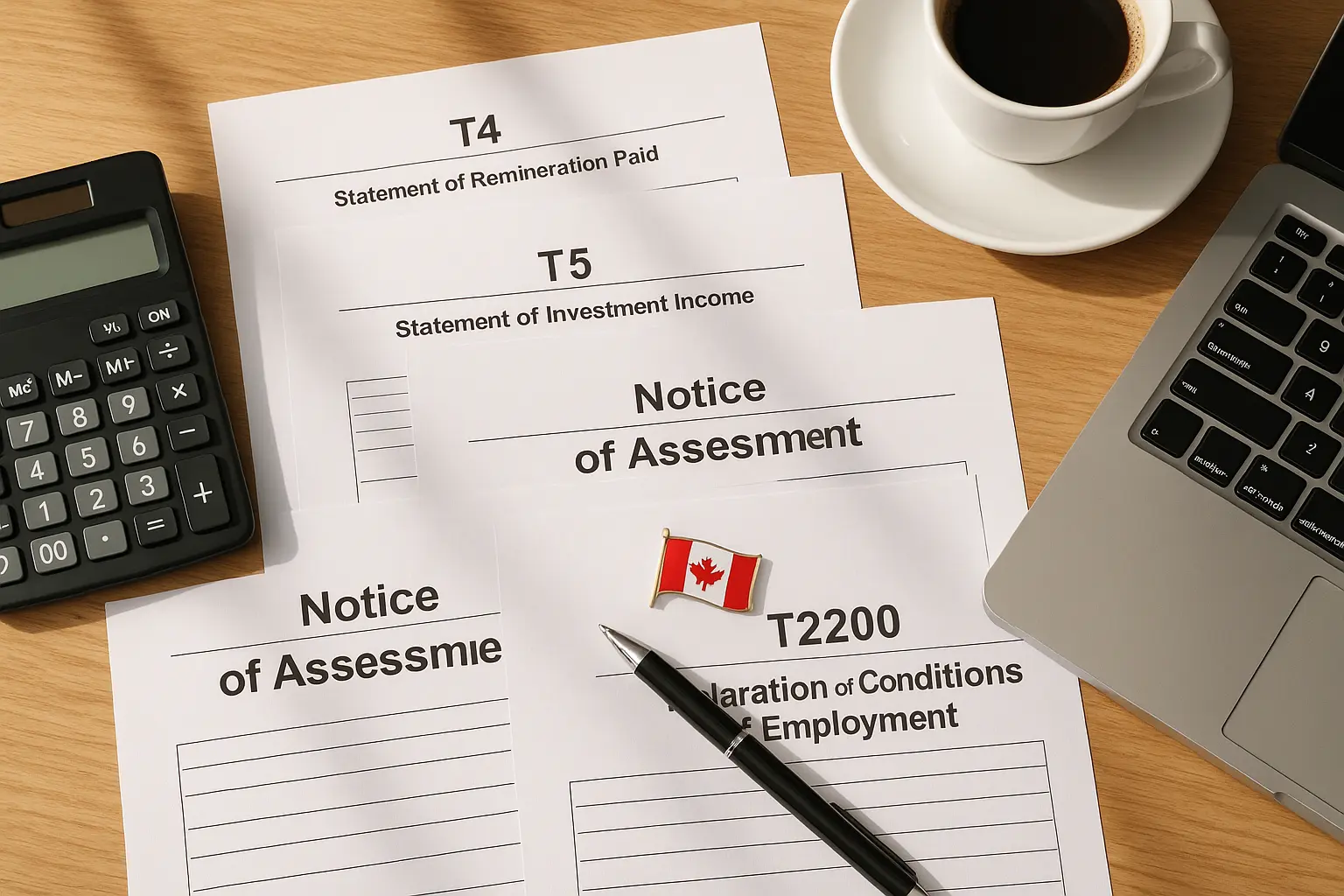How to Record Charitable Donations in QuickBooks Canada

Recording charitable donations in QuickBooks is essential for maintaining accurate financial records and ensuring tax compliance for your registered charity.
Understanding how to properly track both cash and in-kind donations helps you maintain clean books and provides the transparency donors and regulators expect.
By setting up dedicated income accounts and following the right procedures for each type of donation, you can ensure your financial statements accurately reflect your charity's revenue and support CRA reporting requirements.
Following best practices for donation recording saves time, reduces errors, and strengthens your charity's financial management.
Understanding Charitable Donations in QuickBooks Canada
When recording charitable donations in QuickBooks as a registered charity, you must distinguish between different types of donations and ensure compliance with Canadian regulatory requirements.
Proper categorization and documentation are essential for accurate financial reporting and tax compliance.
Definition of Charitable Donations
Charitable donations are gifts received by your registered charity from donors.
These can be monetary contributions, goods, or services provided to support your charitable mission.
When you record these in QuickBooks, transactions must clearly show the nature of the donation, the donor's information, and the date received.
Donations represent income for your charity and must be tracked separately from other revenue sources like government grants or fee-for-service income.
Clear record-keeping in QuickBooks makes it easier to prepare financial statements, issue donation receipts, and comply with CRA requirements.
Types of Donations: Cash and In-Kind
There are two main types of donations you will track in QuickBooks: cash donations and in-kind donations.
Cash donations include money received via cheque, cash, electronic transfer, or online payment platforms. You record these as income using a bank deposit or sales receipt linked to a dedicated donation income account.
In-kind donations involve goods or services donated to your charity. These require recording the fair market value of the donated item as both income and an asset or expense, depending on how your charity will use the donation.
Each type is recorded differently in QuickBooks to maintain accurate accounting balances and ensure proper reporting to donors and the CRA.
Canadian Regulatory Considerations for Charities
The Canada Revenue Agency (CRA) sets strict rules on how registered charities must track and report donations.
You must maintain records that include the donor's name, address, donation date, and amount or fair market value of non-cash gifts.
For donations of $20 or more, you are required to issue official donation receipts that meet CRA standards.
You need to use specific income accounts in QuickBooks to separate charitable donations from other revenue sources.
This helps during audits and ensures you can easily generate reports showing total donations received during the tax year.
Following these regulations ensures your records comply with Canadian charity accounting requirements and protects your charity's registered charity status.
Setting Up QuickBooks for Recording Donations
To properly manage donations received by your charity in QuickBooks, you need to configure your accounting system correctly.
This involves selecting the appropriate QuickBooks version, setting up your Chart of Accounts to track donation income, and creating specific accounts for different types of contributions.
Choosing QuickBooks Online vs. QuickBooks Desktop
The choice between QuickBooks Online and QuickBooks Desktop depends on your charity's needs and working preferences.
QuickBooks Online offers easy access from any device, automatic updates, and integrates with many donor management and fundraising apps.
It is well-suited for remote teams and charities that need flexible access.
QuickBooks Desktop provides more advanced features and customization options for complex reporting needs.
It can handle detailed fund accounting and is reliable for charities that prefer installed software.
However, it requires manual updates and may not offer the same accessibility as the online version.
Consider your budget, team size, and whether you need multi-location access when deciding.
Both versions support tracking charitable donations, though setup steps may differ slightly.
Configuring Chart of Accounts for Donation Income
Your Chart of Accounts is where you organize all financial activities, including donations received.
To track charitable donations properly, add dedicated income accounts to separate them from other revenue sources.
Create specific accounts for different types of donations to simplify reporting and ensure accurate financial statements.
Structure your Chart of Accounts so donation income is clearly identified:
Account Type
Detail Type
Name
Income
Sales of Product Income
Cash Donations
Income
Sales of Product Income
In-Kind Donations
This setup ensures donations are reliably recorded and can be reviewed independently from grants, program fees, or other income.
Creating Dedicated Income Accounts for Donations
Setting up income accounts exclusively for charitable donations is critical for accurate financial reporting.
In QuickBooks, go to the Chart of Accounts and choose to add a new account.
Select Income as the account type and choose an appropriate detail type such as Sales of Product Income or Other Income.
Name it clearly, such as "Cash Donations" or "In-Kind Donations – Goods," so there's no confusion during bookkeeping or audits.
Consider creating separate income accounts for different donation categories, such as:
- General donations
- Restricted donations (tied to specific programs)
- Memorial donations
- In-kind goods
- In-kind services
Using dedicated accounts keeps your financial records clean and helps you document total donations received, track restricted funds separately, and provide clear reports to your board, donors, and the CRA.
Make sure these accounts are only used for donation income to avoid mixing with other revenue categories.
Recording Cash Donations in QuickBooks
You need to record cash donations carefully to maintain accurate books and ensure proper revenue recognition.
Proper setup and categorization will help you track donations clearly and issue correct tax receipts to donors.
This process involves adding donors to your system, recording deposits correctly, and using the right income accounts.
Adding Donors as Customers
Start by adding donors as customers in QuickBooks.
This allows you to track donations from each individual or organization and maintain donor records for receipt issuance.
To add a donor:
- Go to Sales > Customers > New Customer
- Enter the donor's full legal name and contact details
- Include their address for CRA-compliant donation receipts
- Save the customer profile
This setup helps you track all donations received from each donor and makes it easy to generate annual donation summaries.
You can also attach supporting documents like thank-you letters here.
Recording Cash Deposits and Bank Transactions
When you receive cash donations, you need to record them as income deposits in QuickBooks.
For cheques or cash received:
- Choose + New > Bank Deposit
- Select the bank account where you deposited the funds
- In the "Add funds to this deposit" section, select the donor from your customer list
- Enter the donation amount
- Select your Cash Donations income account
- Add a memo such as "General donation – January 2025"
- Save and close
For online donations or electronic transfers, use the same method once the funds appear in your bank account.
Always match your QuickBooks deposits to your actual bank statements to ensure accuracy.
Using Sales Receipts for Individual Donations
For immediate recording of individual donations, especially when you need to issue a receipt right away, use the Sales Receipt feature.
To create a sales receipt:
- Choose + New > Sales Receipt
- Select the donor from your customer list
- Choose the donation date
- Add a product/service item called "Donation" (create this once in your Products and Services list)
- Link this item to your Cash Donations income account
- Enter the donation amount
- Select your deposit account
- Save and send the receipt to the donor
This method records the income immediately and provides the donor with documentation for their tax records.
It's particularly useful for tracking donations that require immediate acknowledgement.
Assigning Donations to Income Accounts
Always assign your cash donations to dedicated income accounts for proper financial reporting.
This ensures donations are clearly separated from other revenue sources on your income statement.
If you haven't created a donation income account yet:
- Go to Accounting > Chart of Accounts > New
- Choose Income as the account type
- Select an appropriate detail type like Sales of Product Income
- Name the account clearly, for example, "Cash Donations" or "General Fund Donations"
- Save the new account
When entering deposits or sales receipts, always select this income account in the account or category field.
For restricted donations tied to specific programs, consider creating separate income accounts like "Building Fund Donations" or "Scholarship Donations."
This keeps your financial statements clear and makes it easier to report to donors and your board on how funds are being used.
Handling In-Kind Donations
When working with in-kind donations in QuickBooks, you need to carefully document the fair market value of goods or services received.
This involves creating specific items for donated goods and services, recording the income properly, and maintaining supporting documentation.
These steps ensure your in-kind donations are accurately tracked and reported in your financial statements.
Creating Items for Donated Goods and Services
Start by creating product or service items for different types of in-kind donations you receive.
This allows you to track these contributions separately in your books.
To do this, go to Settings, then Products and Services, and select New.
Choose Service for donated services or Non-inventory for donated goods.
Use clear names, such as "In-Kind Donation – Office Supplies" or "Donated Professional Services," to identify them easily.
Assign these items to a dedicated income account such as "In-Kind Donations – Goods" or "In-Kind Donations – Services."
Set the default price/rate to zero, as you'll enter the fair market value when recording each specific donation.
This places the value of donations in the right part of your financial reports and keeps in-kind contributions separate from cash donations.
Recording In-Kind Donations as Income
To properly record in-kind donations, you need to document both the income received and how your charity will use the donated items or services.
For donated goods your charity will use (like office supplies or equipment):
- Choose + New > Sales Receipt
- Select the donor from your customer list
- Add the in-kind donation item you created
- Enter the fair market value of the goods donated
- In the memo, describe what was donated
- Save the receipt
For donated services (like pro bono legal work or volunteer professional time that replaces paid services):
- Follow the same process using your donated services item
- Document the fair market value based on normal rates for that service
- Include details about the service provided
Note: According to CRA guidelines, volunteer time for general volunteering typically should not be recorded as in-kind donations, only professional services that would otherwise be purchased.
Managing Donated Inventory
When you receive donated goods that you will sell (such as items for a charity shop) or distribute to clients, you may need to track them as inventory.
To record donated inventory:
- Create an inventory item in Products and Services
- When you receive the donation, use a Sales Receipt to record the fair market value as income
- The inventory asset account will increase automatically
- Create a Journal Entry or Bill to record the corresponding expense or program cost if you're distributing items to beneficiaries
- When you sell donated items, record the sale normally
For goods distributed to program participants, track the distribution as a program expense to show how donated resources support your mission.
Documenting Fair Market Value
The CRA requires that in-kind donations be recorded at fair market value.
This is the amount the item or service would sell for in an open market.
To determine and document fair market value:
- Request a written valuation from the donor when possible
- Use recent purchase receipts or invoices for similar items
- Research comparable items or services online
- Obtain professional appraisals for high-value donations (artwork, property, vehicles)
Keep all supporting documentation attached to the transaction in QuickBooks or in your physical files.
For donations valued at over $1,000, CRA requires more detailed documentation.
Document who determined the value and the method used.
This protects your charity during audits and ensures you can issue accurate donation receipts that meet CRA requirements.
Verifying and Reconciling Donation Records
When you record donations in QuickBooks, it's essential to verify that all transactions are correctly recorded and your accounts are balanced.
This helps keep your financial records accurate and ensures your donation income is properly accounted for.
Reviewing Donation Transaction Status
You must regularly review the status of all transactions involving donations to confirm they are recorded as intended.
Accurate status updates ensure your books reflect actual income received.
Check these key points:
- Sales receipts for donations should show as deposited or linked to bank deposits
- Bank deposits should match your actual bank statements
- All donor information should be complete for receipt issuance
- Income accounts should reflect the correct donation type (cash vs. in-kind)
Review your transaction lists weekly or monthly to catch any errors early.
Look for duplicate entries, incorrect amounts, or donations assigned to wrong income accounts.
This step prevents confusion during year-end reporting or audits.
Reconciling Bank Accounts
Regular bank reconciliation is critical to ensure all donation income is properly recorded.
To reconcile donations in your bank accounts:
- Go to Accounting > Reconcile
- Select your bank account
- Enter the statement ending date and balance
- Match each donation deposit in QuickBooks to the corresponding entry on your bank statement
- Check off matched transactions
- Investigate any discrepancies
Pay special attention to:
- Online donations that may take several days to appear in your bank
- Cheques that haven't cleared yet
- Processing fees deducted by payment platforms
Reconcile your accounts monthly to maintain accurate records and identify any missing or incorrectly recorded donations quickly.
Generating Donation Reports
QuickBooks allows you to generate detailed reports on donation income for board meetings, donor communications, and CRA compliance.
To create useful donation reports:
- Go to Reports
- Select Sales and Customers reports or customize a Profit and Loss report
- Filter by your donation income accounts
- Set the date range needed
- Customize to show donor names, donation dates, and amounts
Generate these reports regularly:
- Monthly donation summary by type (cash vs. in-kind)
- Annual donation totals by donor for receipt issuance
- Restricted fund donations vs. general donations
- Comparison reports showing donation trends over time
These reports help you track fundraising progress, acknowledge donors appropriately, and provide financial transparency to your board and the CRA.
Best Practices for Charity Accounting and Reporting
Accurate record-keeping and clear financial reporting are essential for managing your charity's donation income in QuickBooks.
You need to organize your accounts properly and produce reports that meet both donor expectations and regulatory requirements.
Maintaining Clear Audit Trails
You should ensure every donation transaction is fully traceable and documented.
Use QuickBooks to link donations to specific donors and maintain complete records including donor information, donation dates, amounts, and descriptions.
Create a standardized process for recording donations:
- Record all donations within one business day of receipt
- Attach supporting documentation (cheque images, email confirmations) to transactions
- Include detailed memos describing the donation purpose or restrictions
- Keep copies of all donation receipts issued
Set up a dedicated donation income section in your chart of accounts that separates cash and in-kind donations clearly.
Keep detailed notes and documentation for each entry, especially for in-kind donations where fair market value must be justified.
Clear audit trails help you prepare for CRA audits and provide transparency for your board, donors, and regulators.
They also help your accountant prepare year-end financial statements without confusion.
Issuing CRA-Compliant Donation Receipts
Canadian charities must issue official donation receipts that meet CRA requirements for donations of $20 or more.
Your QuickBooks system should support this process.
Ensure receipts include:
- Your charity's legal name and CRA registration number
- Donor's full name and address
- Donation date and amount received
- For in-kind donations, a description of the property and its fair market value
- Statement that it is an official receipt for income tax purposes
- Signature of an authorized representative
Use QuickBooks to track which donors have received receipts and maintain copies of all receipts issued.
Generate annual summaries for donors who make multiple contributions throughout the year.
Consider integrating QuickBooks with donor management software to streamline receipt generation and maintain comprehensive donor records.
Tracking Restricted vs. Unrestricted Donations
Many charities receive donations designated for specific purposes (restricted) as well as general donations (unrestricted).
Tracking these separately is essential for accountability and proper fund management.
In QuickBooks, set up separate income accounts for:
- Unrestricted general donations
- Program-specific restricted donations (e.g., "Building Fund," "Scholarship Fund")
- Temporarily restricted donations with time limits
When recording donations, always ask donors if the gift is restricted and document their intent clearly.
Use class tracking or location tracking in QuickBooks if you need to track donations across multiple programs or locations.
Generate regular reports showing:
- Total restricted funds received and their designated purposes
- Restricted funds spent and remaining balances
- Unrestricted fund availability
This transparency builds donor trust and ensures you honour donor intent while maintaining compliance with CRA requirements for restricted fund management.
Conclusion
If you need help recording donations in QuickBooks, contact B&H Charity Accounting Firm. Our team specializes in charity accounting, ensuring your donation records are accurate and compliant with CRA requirements.
Call us at (289) 301-8883 or visit charityaccountingfirm.ca for expert support. You can schedule a FREE consultation to discuss your charity accounting needs.
We guide you through setting up donation income accounts, managing restricted funds, and preparing for CRA audits.
Trust B&H Charity Accounting Firm to simplify your charity bookkeeping. Accurate donation records strengthen donor relationships and ensure regulatory compliance.
Reach out today to make your charity accounting easier and more reliable.
Frequently Asked Questions
Managing donation income properly helps you maintain accurate books and meet CRA requirements. Understanding how to record and report donations correctly is essential for every registered charity.
How do charities record donations received in QuickBooks?
Charities record donations as income, not expenses. Cash donations are recorded using bank deposits or sales receipts linked to donation income accounts.
In-kind donations require recording the fair market value as income and documenting the donated goods or services received.
Where do donations appear on a charity's financial statements?
Donations appear as income (revenue) on your Statement of Revenue and Expenses (income statement). They increase your total revenue.
On the Statement of Financial Position (balance sheet), cash donations increase your cash assets, while in-kind donations may appear as inventory or other assets depending on their nature.
Where should donation income be recorded in your chart of accounts?
Donation income should be recorded in dedicated income accounts in your chart of accounts. Create separate accounts like "Cash Donations," "In-Kind Donations," and specific accounts for restricted donations.
This keeps donation revenue clearly separated from grants, fees, or other income sources.
How do you enter donation income in QuickBooks?
For cash donations, use bank deposits or sales receipts, selecting the donor as the customer and linking to your donation income account.
For in-kind donations, create items for donated goods or services, record a sales receipt with the fair market value, and link to your in-kind donation income account.
What type of account is donation income for a charity?
Donation income is a revenue account (income account) for charities. It increases your total income and supports your charitable programs.
This is different from businesses, which treat charitable contributions as expenses.
What is the accounting journal entry when a charity receives a donation?
For cash donations: Debit Cash or Bank account, Credit Donation Income account.
For in-kind donations: Debit the appropriate asset account (Inventory, Equipment, etc.) or expense account if immediately used, Credit In-Kind Donation Income account.
The entry increases both your assets (or decreases expenses) and your income, reflecting the contribution received.

























